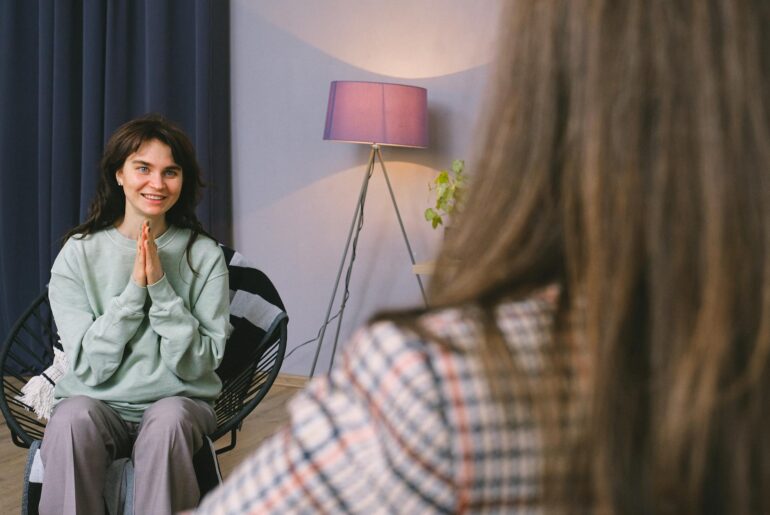Marius Presterud
Last Updated on March 4, 2024 by It’s Complicated
The Pandemic Letters is a series of reflections by Psychologist Marius Presterud. In the letters Presterud delves into the deeper meanings of Covid-19, its impact on societal health and practical consequences for health personnel.
When you feel lonely you are always part of a larger group. This group just doesn’t meet up and talk about it very often, which may be part of the problem. This tragic-comic predicament rings especially true for our current moment in time.
While it is still too early to tell what toll loneliness stemming from social distancing and lock-down measures have taken on our collective health and cohesiveness, pre-pandemic life saw as many as one in ten suffer from severe and persistent loneliness (1).
This phenomena is happening in tandem with the relatively modern phenomena of people living on their own. In 2020 one in three households across the European Union had only one person (2).
The German capital is currently leading this trend, with every second household in Berlin being a single person household. Gloomily, 300 people a year pass away in their apartments in this city unnoticed by family and neighbours (3).
Beyond loneliness literally being a very painful thing to go through (4), there are secondary costs too. It has been associated with anxiety, depression, low sleep quality and concentration problems, as well as an early death and a higher risk of committing suicide (5).
Feelings of loneliness also escalate the body’s defensive inflammation response and makes you more vulnerable to heart problems, cancer, dementia and less protected against viruses (!) (4) (6).
Perhaps a less known statistic is that loneliness can indirectly affect one’s career, leading to lower wages and fewer promotions due to, amongst other factors, less collaboration with colleagues (3).
All these things taken together leads to the broad claim that loneliness cuts an average of ten years of people’s life expectancy – You’ve probably seen headlines like “Loneliness more unhealthy than obesity” (7) or “Loneliness worse than smoking 15 cigarettes a day” (2).
But what do we really mean when we speak of loneliness, and are we talking about the same thing when we do? Since loneliness is stigmatized it can be hard to know exactly what people mean when they say they are lonely, as well as when researchers study it and take steps to alleviate it.
Alleinsein und Einsamkeit / Aloneness and loneliness
Have you ever imagined the M10 being a big, beige boa? And in passing, slid your fingers along the side of its ribs? Wiped off the soot, in post-wake up somberness?
Daydreaming is a pleasant activity of being alone with one’s own imagination, and can be performed with or without others present. While feeling alone in the presence of others, is experienced as unpleasant and awkward.
When loneliness was first studied it was expected to reflect how socially connected people were or weren’t (8), but it turned out that the objective and the perceived amount of social connections people experienced were very different things.
Some people had a lot of friends, but also felt lonely. While some had few confidantes, but felt that they had all the support they needed. Simultaneously, having very few social connections seemed to have detrimental consequences on people’s health regardless of whether it was noticed by the persons themselves.
This led social scientists to speculate about all the various forms that loneliness can take. Let’s look at three underlying dimensions that were identified:
- Transitional loneliness <-> Chronic loneliness
Situational or transitional loneliness involves people who had satisfying relationships until some specific life change occurred, be it a break-up, death of a spouse, parent or friend, deteriorating health and/or having to quarantine, or moving to a new country. Situational loneliness can be severely distressing even though it will pass. Chronic loneliness is usually defined as occurring when a person has lacked satisfactory social relations for two years or more.
- Existential loneliness <-> Loneliness anxiety
We live as we dream, alone (9). Existential loneliness is an inevitable part of the human experience, dealing with things that can only be known privately, such as being born into a universe devoid of meaning, having to make sense out of it, freedom, responsibility, doubt, and one’s own death. Existential loneliness can potentially provide an avenue for self-inspection, growth and triumphant creation. In contrast, fear of loneliness or loneliness anxiety, is thought of as exclusively negative and involves such things as fear of abandonment, being alone in the house, and FOMO.
- Emotional loneliness <-> Social loneliness
Emotional loneliness is based on the absence of a personal, intimate relationship or attachment to someone. It is the more acutely painful form of isolation which can make people feel desperate and panicky. Social loneliness is described as a lack of social connectedness, social identity, and sense of community or being amongst ‘one’s own’. Emotionally it can be experienced as a mixture of feeling rejected, disenfranchised, ‘othered’ and unacceptable, on the one hand, and on the other, as being bored, unengaged and disconnected.
By now it should be apparent that we may want to adopt the plural feelings of loneliness rather than the talk about it as one singular thing. These different flavors of loneliness can also be assumed to come with separate challenges and prognoses. One can also expect different types of loneliness to overlap and be experienced in tandem, each adding their own impact on an individual’s relationships, physical and mental health.
A cure for loneliness
If loneliness is such a health problem, shouldn’t therapists have found a way to treat it therapeutically?
Because of the plural nature of loneliness, coping with it cannot be based on one unified strategy. Instead different methods, be it social activity groups, social skill training, support networks, individual therapy or group therapy, all have their own strengths and weaknesses.
Individual therapy or simply ‘talk therapy’, is a form of therapy where you meet your therapist one-to-one, in a therapist’s office, at regular, agreed upon intervals.
The change-work you do together often involves recognizing and unpacking the patterns in your life. This could help in finding out what type of loneliness you are feeling and inspect how it expresses itself. Just as with depression and anxiety, research suggests that challenging and correcting maladaptive assumptions about social interplay play a big role in reducing feelings of loneliness(8). A therapist may encourage clients to actively seek out a desirable community and then give focus to what makes it difficult to connect.
While attending therapy ideally includes a feeling of being understood (temporarily relieving emotional loneliness), one shouldn’t assume that going to a therapist in itself can replace having friends and a social network.
Traditionally, therapists offer a professional relationship which involves keeping their own needs and wants in check, and only using self-disclosure instrumentally in the therapy relationship. This hampers some of the richnesses of more reciprocal bonds.
As one person is seeking help and the other is supplying it, the relationship is fundamentally hierarchical. This can deflect the feeling of mutual dependency which is so important in satisfying a deeper sense of belonging (5).
Therapy in a group, by the group, of the group
For immediate as well as long-lasting impact on one’s feelings of loneliness, group therapy is a good place to start. This type of therapy has been a standard type of intervention in numerous and different treatment models for the last 50 years.
It deviates from individual therapy in that the processes that are considered therapeutic mainly play out between members of a group, rather than just between a therapist and a patient. The relational exchanges that take place can therefore be described as more ‘horizontal’ than ‘vertical’. As such it facilitates reciprocal dependency between a group of ‘equals’ who are in the same context. It can also be offered for a lower fee than individual therapy, since the therapist’s time and attention is distributed over several people at the same time.
Everyone has some experience with being part of a group during their life, be it being part of a family, a class at school, working in a team, doing sports, and so on. Therapy groups share many traits with these groups, but an important distinction is that in group sessions every member has a set of goals for their own therapy, and then everyone takes part in that work together.
Once in the group, members often talk about what issues they want to work with and how the issues play out in their everyday life or in the group. This could be things like a reluctance to trust others, trying to avoid conflicts and difficult conversations, always trying to please others, or feeling easily self-conscious and embarrassed.
Often symptoms of anxiety, low self-esteem, general malaise or disappointment with life manifest itself as unsatisfying, malfunctioning contact with the other people in your life, or behaviour such as becoming withdrawn and reserved, agitated or easily frustrated with others.
Those who experienced an exceptionally turbulent childhood can also fluctuate between extreme strategies in their attempt to connect with others: Keeping them at arm’s length, so that emotionally meaningful connections are kept at a bearable minimum, and/or hectically forming intense, but often short-lived and unstable relationships.
Once the group knows the individual members’ stories and struggles, the group ‘stays with the trouble’ (11), so to speak, and are aware that the unwanted habits could resurface in the interactions within the group itself, at which point they could be met with curiosity and worked through in plenum.
Group-analytic therapy is non-themed, non-directed and process-oriented, and as such comes close to everyday life interactions, making it more likely participants will transfer what they’ve learnt in the groups to their lives away from it. It can be argued that it is the most socially relevant type of psychotherapy in a world in which local communities are breaking down (12).
Moving beyond the stigma of loneliness
Unpleasant feelings like loneliness, tend to get a bad rap these days.
One of the basic demands that underlie Western societies, and has done so at least since World War II, is to be happy and fulfilled, while negative emotions have been put on the back burner, culturally. But behind the idea that emotional pain has to be avoided or eliminated, lies the assumption that it has only negative and no positive aspects. However, by most developmental theories, emotional pain is the core mechanism driving the development of social skills, establishing and securing human attachment. The threat of loss forms an underlying premise to everyone’s sociality.
While chronic loneliness – feelings of loneliness that are left to linger and not acted upon – indeed appear harmful, short spells of loneliness can be positive and necessary because it highlights the need for social connections. Seen in this light, feelings of loneliness play an important role in protecting society. It just needs to be put to work, on behalf of the group.
Marius is the founder of Berlin Art Therapy (abbr. BAT), a platform for offering Group-analytic Art Therapy to native and non-native English speakers in Berlin. New groups are planned to start post lock-down spring 2021 and are accepting new members. If you would like to have a meeting to know more about our groups or if joining one is the right thing for you, message Marius via the It’s Complicated platform or visit his homepage for more details.
References:
(1) The European Commission’s Science and Knowledge Center (2018). Loneliness – an unequally shared burden in Europe. https://ec.europa.eu/jrc/sites/jrcsh/files/fairness_pb2018_loneliness_jrc_i1.pdf
(2) Neil Howe, N. (2019) Millennials And The Loneliness Epidemic Forbes 03.05.2019 https://www.forbes.com/sites/neilhowe/2019/05/03/millennials-and-the-loneliness-epidemic/?sh=67a5d6b27676
(3) Deutche Welle (2019). Berlin, Capital of Loneliness. Deutche Welle, 17.10.2019. https://www.dw.com/en/berlin-capital-of-loneliness/a-50867492
(4) Chen, A. (2015). Loneliness May Warp Our Genes, And Our Immune System. NPR, 29.11.2015. https://www.npr.org/sections/health-shots/2015/11/29/457255876/loneliness-may-warp-our-genes-and-our-immune-systems?t=1608938812513
(5) Adams, T. (2016) Loneliness Is Like An Iceberg. The Guardian, 28.02.2016. https://www.theguardian.com/science/2016/feb/28/loneliness-is-like-an-iceberg-john-cacioppo-social-neuroscience-interview
(6) Bergman, R. (2017). Your Brain Interprets Prolonged Loneliness as Physical Pain – Why? 06.01.2017. https://bigthink.com/robby-berman/the-powerful-medical-impact-of-loneliness
(7) Sample, I. (2014). Loneliness twice as unhealthy as obesity for older people, study finds. Guardian, 16.02.2014. https://www.theguardian.com/science/2014/feb/16/loneliness-twice-as-unhealthy-as-obesity-older-people
(8) Peplau, L., A. & Goldston, S., E. (1982). Preventing the Harmful Consequences of Severe and Persistent Loneliness – National Institute of Mental Health (U.S.). Department of Psychology, University of California, Los Angeles, February 10 – 12, 1982. https://play.google.com/books/reader?id=ySBrAAAAMAAJ&hl=no&pg=GBS.PA18
(9) Conrad, J. (1902). Heart of Darkness. Blackwood’s Magazine.
(10) Ormont, L., R (1988). The Leader’s Role in Resolving Resistance to Intimacy in the Group Setting. International Journal of Psychotherapy 38(1) January 1988
(11) Haraway, D,, J. (2016) Staying with the Trouble: Making Kin in the Chthulucene, Duke University Press, 2016. Chapter two: Tentacular Thinking: Anthropocene, Capitalocene, Chthulucene. https://www.e-flux.com/journal/75/67125/tentacular-thinking-anthropocene-capitalocene-chthulucene/
(12) Nitsun, M. (2015) The Anti-Group. Destructive forces in the group and their creative potential. Routledge Mental Health.





Comments are closed.